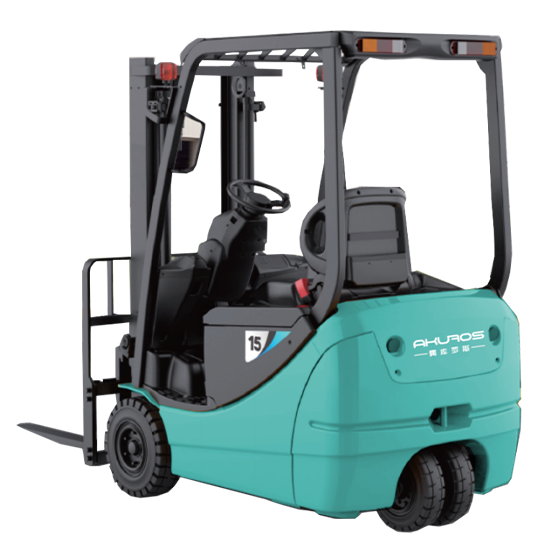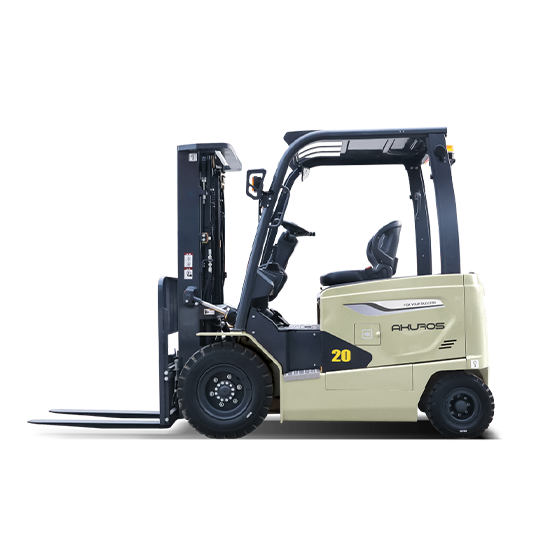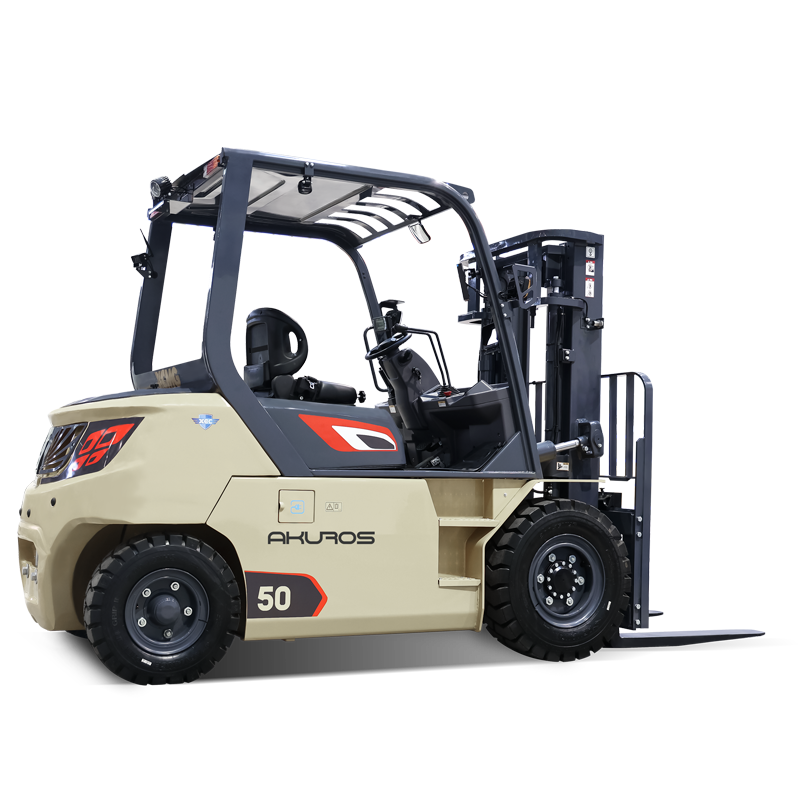Introduction to Counterbalanced Trucks: The Heavy-Lift Experts
In the world of material handling, Counterbalanced Trucks stand as one of the most essential and versatile tools. Designed with both functionality and performance in mind, these powerful machines have revolutionized how businesses approach heavy-duty forklifts operations. Their core capability lies in their ability to lift and transport loads without the need for outriggers, thanks to a built-in counterweight system.
This inherent balance makes Counterbalanced Trucks the go-to choice in environments ranging from logistics centers and ports to construction sites and manufacturing facilities. These machines are capable of performing efficiently even in the tightest of indoor spaces or the harshest of outdoor conditions. Whether maneuvering through narrow aisles or lifting pallets several meters high, Counterbalanced Trucks offer unmatched control, stability, and load handling efficiency.
They are specifically engineered for applications requiring not just power but also precision, making them invaluable in modern-day industrial supply chains. Their adaptability, coupled with rugged reliability, makes them a cornerstone in materials handling across the globe.
Distinguishing Features of Counterbalanced Trucks
The unique advantage of Counterbalanced Trucks lies in their self-balancing structure. The presence of a heavy counterweight at the rear of the truck offsets the weight of the load at the front. This intelligent engineering eliminates the need for front or side stabilizers, allowing operators to drive directly up to the load without complex positioning maneuvers.
Another defining feature is the mast configuration, which offers vertical stability and high lifting capacity. The mast in a Counterbalanced Truck is built with reinforced steel to ensure minimal flex during operation, promoting consistent mast stability and a strong center of gravity. The design enables smooth lifting and lowering, even with bulky or uneven loads.
The ergonomic cabin design is another hallmark. From adjustable seats to intuitive control layouts, the trucks are made for long working hours without compromising operator safety. Advanced visibility features and integrated digital displays provide real-time feedback on load weight, tilt angles, and truck health metrics, ensuring safe and efficient operations.

Counterbalanced Trucks
Applications Across Diverse Industries
The usage of Counterbalanced Trucks spans an extensive range of sectors due to their unmatched adaptability. In manufacturing plants, they are frequently used to transport raw materials, semi-finished goods, and finished products from one station to another. Their robust nature makes them suitable for both indoor assembly lines and rugged outdoor yards.
In the warehousing and logistics industry, these trucks play a pivotal role in stacking, loading, and unloading goods, especially in areas where load handling precision is critical. The retail and wholesale sectors use them for moving heavy merchandise across large distribution centers.
Construction sites rely on Counterbalanced Trucks for transporting construction materials like cement, steel rods, or prefabricated structures. Their robust construction ensures performance under dusty and uneven terrain.
They are also highly valued in the ports and shipping industry. Whether handling containers or organizing cargo on pallets, Counterbalanced Trucks deliver reliable performance around the clock. With the right attachments, these trucks can be adapted for specialized operations like barrel lifting, clamp handling, or container stuffing and destuffing.
Load Stability and Weight Distribution in Counterbalanced Trucks
One of the most crucial aspects of Counterbalanced Trucks is their superior load stability and optimal weight distribution. These trucks are designed with a scientific approach to managing the center of gravity, which is the key to preventing tipping accidents and ensuring safe operations, especially at higher lifting heights.
The counterweight, placed at the back of the truck, plays a pivotal role in maintaining equilibrium. When the forks lift a load, the rear weight counterbalances the force, ensuring that the vehicle stays grounded. This distribution reduces the risk of tilting forward, especially when handling loads with varying mass or center positions.
The truck’s chassis and wheelbase are meticulously designed to support this dynamic balance. Moreover, advanced suspension systems absorb shocks from uneven flooring or ground surfaces, contributing to overall mast stability and smoother handling.
Modern Counterbalanced Trucks also incorporate digital tilt sensors and automatic leveling systems that further enhance operator safety and reduce the chance of human error. These features help detect shifts in load or unexpected weight distribution anomalies, prompting alerts or automatic adjustments.

Counterbalanced Trucks Suppliers
Maintenance and Troubleshooting Tips
To ensure the longevity and performance of Counterbalanced Trucks, regular maintenance is vital. Routine checks not only keep the trucks operating at peak efficiency but also safeguard operators and loads. The most common maintenance practices include daily inspections of tires, forks, hydraulic systems, and safety mechanisms.
Hydraulic fluid levels and brake systems should be monitored for wear and leaks. Forks must be examined for any bending or cracks, as these can compromise lifting capacity and lead to load mishandling. The mast should be lubricated regularly to ensure seamless vertical motion and maintain mast stability.
Battery-powered Counterbalanced Trucks require a disciplined charging routine and proper battery water levels, while diesel or LPG versions demand engine oil checks and filter replacements. Keeping tires properly inflated and balanced also improves maneuverability and ensures the truck’s center of gravity remains optimal.
When it comes to troubleshooting, common warning signs include difficulty lifting, unusual noises during operation, or visible tilting when handling a load. Operators should be trained to recognize these signs and immediately report them for inspection. Investing in periodic professional servicing can prevent small issues from escalating into costly breakdowns.
The Future of Counterbalanced Trucks: Innovation and Adaptation
As industries evolve, so too must the machinery that supports them. The future of Counterbalanced Trucks is firmly anchored in innovation and sustainability. Manufacturers are increasingly integrating electric drivetrains to reduce emissions and meet environmental standards. These new-generation heavy-duty forklifts deliver silent, clean, and powerful performance without compromising on load handling ability.
Autonomous and semi-autonomous Counterbalanced Trucks are also gaining popularity. With AI-enabled navigation, these machines can now perform repetitive tasks in large facilities with minimal human intervention. This shift enhances productivity and significantly reduces human error, while advanced collision detection systems boost operator safety.
Other innovations include modular designs that allow for quick customization and IoT connectivity for real-time diagnostics and performance tracking. Smart fleet management systems now enable facility managers to monitor truck usage, fuel efficiency, and maintenance schedules through cloud-based platforms.
Materials are also evolving. High-strength, lightweight alloys and reinforced composites are now being used in truck construction to improve lifting capacity while reducing overall truck weight. This evolution not only enhances robust construction but also helps in conserving fuel or battery life.
As the logistics and manufacturing sectors continue to digitize and automate, Counterbalanced Trucks will remain an integral part of this transformation—steadily adapting, evolving, and empowering the backbone of industry.

counterbalanced forklift
Counterbalanced Trucks are far more than simple lifting machines—they are a powerful blend of intelligent engineering, robust construction, and unmatched versatility. With their ability to perform in a wide range of conditions and industries, these heavy-duty forklifts provide reliable, efficient, and safe load handling solutions that are central to modern logistics and manufacturing operations.
From their balanced design and intuitive controls to their adaptability in diverse environments, Counterbalanced Trucks are engineered for excellence. Their continued evolution—driven by technological innovation, environmental consciousness, and operational efficiency—ensures that they will remain at the forefront of material handling solutions for decades to come.
Whether you are moving goods across a warehouse, lifting pallets in a loading bay, or transporting materials at a construction site, investing in Counterbalanced Trucks means choosing a solution that is stable, powerful, and ready to meet the toughest demands. As industries grow and needs become more complex, these trucks will continue to unleash their power, making heavy-duty handling truly easy.For example: “Want to learn more about Counterbalanced Trucks? Contact us now to get a quote!”
Previous News
The Ultimate Guide to Stackers: Maximizing Effi...Next News
The Ultimate Guide to Reach Trucks: Revolutioni...Share:




